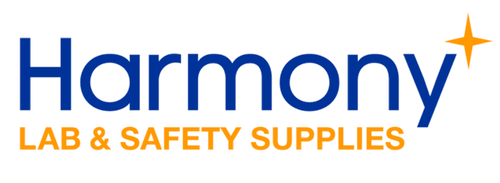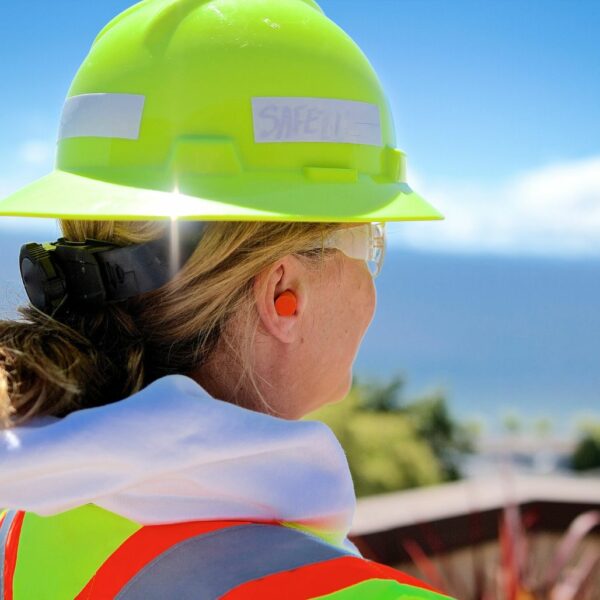A Comprehensive Guide to Hearing Protection
Exposure to loud noises can lead to hearing loss and cause irreversible damage. Prevention is key.
This guide will explore how to effectively safeguard your hearing with the help of quality hearing protection brands such as Peltor, Portwest, and others.
Understanding the Importance of Hearing Protection
1. The Impact of Noise Exposure
Noise exposure can have both short-term and long-term effects on our hearing. Short-term exposure to loud noises can result in temporary hearing loss, which usually recovers within a few hours or days.
However, long-term exposure to high noise levels can cause permanent hearing loss, tinnitus, and communication difficulties. According to the National Institute for Occupational Safety and Health (NIOSH), exposure to noise levels above 85 decibels (dBA) for an extended period can damage hearing.
2. Identifying Hazardous Noise Levels
Recognizing when noise levels are potentially hazardous to your hearing is essential. As a general rule, if you need to raise your voice to be heard by someone standing about an arm’s length away, the noise level could be damaging to your hearing. You can also use sound level meter apps or devices to measure noise levels in your environment.
3. The Role of Hearing Protection
In cases where you cannot reduce noise exposure by turning down the volume, moving away from the source of the sound, or limiting the time you are exposed, hearing protection is your only option. Hearing protection comes in various styles, materials, colors, and sizes, including earplugs, earmuffs, and earbands. Selecting the right hearing protector for your specific needs and circumstances is crucial.
Types of Hearing Protection
1. Earplugs
Earplugs are small, lightweight devices inserted into the ear canal to block noise. They are available in various materials, including foam, silicone, and wax. Earplugs can be disposable or reusable; some even come in custom-made designs for a more personalized fit. Peltor and Portwest offer a wide range of earplugs suitable for various applications.
2. Earmuffs
Earmuffs are devices worn over the ears, with soft cushions that create a seal around the ear to block out noise. They come in various styles, with some designed for use with hard hats or other personal protective equipment (PPE). Peltor is a well-known brand that offers a wide selection of earmuffs for different noise levels and environments.
3. Earbands
Earbands are lightweight bands that fit around the head or neck, with small plugs that fit into the ear canal. They offer an alternative to traditional earplugs and earmuffs for those who find them uncomfortable or inconvenient. Earbands provide moderate noise reduction and can be easily put on and taken off.
5 Factors to Consider When Choosing Hearing Protection
1. Noise Reduction Rating (NRR)
The Noise Reduction Rating (NRR) indicates the amount of noise reduction a hearing protector provides when tested in a laboratory setting. NRR values typically range from 10-33 decibels (dB).
However, remember that the actual noise reduction experienced by the user may be less than the NRR due to factors such as improper fit or inconsistent use.
2. Compatibility with Other PPE
Ensure that your hearing protection is compatible with other worn PPE. Some brands design their safety gear to clip onto hard hats. Check the manufacturer’s data or Harmony’s product description for details.
3. Intermittent vs. Continuous Noise Exposure
Earmuffs are convenient for intermittent noise exposure, as they can be easily removed and replaced. Earplugs are better suited for continuous noise exposure. Both can be combined to maximize protection.
4. Comfort and Convenience
Hearing protection is only effective when worn consistently and correctly, so choosing a comfortable and convenient option is essential.
Heavier ear muffs are generally less comfortable than lighter solutions, unless they clip onto your hard hat.
5. Communication Needs
If you need to hear speech or other sounds while wearing hearing protection, consider options with flat attenuation or special communication headsets.
Flat attenuation hearing protectors reduce noise levels evenly across all frequencies, preserving the clarity of speech and other sounds.
Proper Use and Maintenance of Hearing Protection
Ensuring a Proper Fit
A proper fit is crucial for effective hearing protection. Ensure earplugs are inserted correctly, creating a tight seal within the ear canal. For earmuffs, adjust the headband and position the cushions to seal around the ears without any gaps. Fit testing can help determine if your hearing protection provides adequate noise reduction.
Regular Inspection and Replacement
Inspect your hearing protection regularly for wear, damage, or contamination. Replace disposable earplugs as needed, and clean reusable earplugs and earmuff cushions according to the manufacturer’s instructions. Replace earmuff cushions and foam inserts when they become stiff, cracked, or compromised.
Proper Storage
Store your hearing protection in a clean, dry place when not in use. Avoid exposing hearing protectors to extreme temperatures or chemicals that could degrade the materials.
Hearing Protection for Specific Industries and Environments
1. Construction
Construction workers are frequently exposed to high noise levels from equipment such as jackhammers, power tools, and heavy machinery. Earmuffs and earplugs can provide adequate protection, but double hearing protection may be necessary in particularly noisy environments. Peltor and Portwest offer a range of hearing protection solutions suitable for construction workers.
2. Manufacturing
Manufacturing environments often involve continuous exposure to loud machinery and equipment. Earplugs may be the preferred hearing protection choice due to their comfort and convenience for long periods of use.
3. Music and Entertainment
Musicians and entertainment industry professionals require hearing protection that maintains sound quality while reducing noise levels. Flat attenuation earplugs or specialized musician’s earplugs are often the preferred choice in these situations.
4. Shooting and Hunting
Shooting and hunting activities expose individuals to impulsive sounds from firearms, which can cause significant hearing damage. In these situations, double hearing protection (earplugs combined with earmuffs) is recommended. Electronic earmuffs, such as those offered by Peltor, can provide protection while allowing the user to hear speech and other environmental sounds.
Hearing Protection FAQ
When is Double Hearing Protection required?
In situations where noise levels exceed 100 dBA or involve impulsive sounds (e.g., nail guns or firearms), double hearing protection may be necessary. This involves wearing earplugs in combination with earmuffs to provide additional noise reduction.
Is there specific child or infant-specific hearing protection?
Children and infants have more sensitive ears and are more susceptible to noise-induced hearing damage. Specialized earmuffs designed for children and infants are available, providing effective protection while ensuring comfort and proper fit.
Are there any custom-molded or specialty options?
Custom-molded earplugs are made from impressions of the user’s ears, providing a personalized fit and optimal noise reduction. They can be more comfortable and effective than standard earplugs for some individuals.
Specialty hearing protection options include electronic earmuffs, which amplify low-level sounds and compress loud sounds to protect the user’s hearing while maintaining situational awareness. Flat attenuation and musician’s earplugs are also available to preserve sound quality while reducing noise levels.
Hearing Conservation Programs
A comprehensive hearing conservation program is essential for workplaces with high noise levels. Components of a hearing conservation program may include noise monitoring, employee training, hearing protection selection, fit-testing, and regular hearing tests to monitor employees’ hearing health.
Additional Resources and Support
To learn more about hearing protection and maintaining your hearing health, consult additional resources such as the NIOSH Personal Protective Equipment (PPE) page, the OSH WIKI Hearing Protection page, OSHA, or other trusted sources in safety.
Conclusion
Safeguarding your hearing is vital in today’s noisy world.
You can effectively prevent noise-induced hearing damage by understanding the importance of hearing protection, selecting the appropriate type, and using it correctly and consistently.
Brands like Peltor and Portwest offer a wide range of hearing protection solutions to suit various needs and environments, helping you maintain your hearing health for years.

